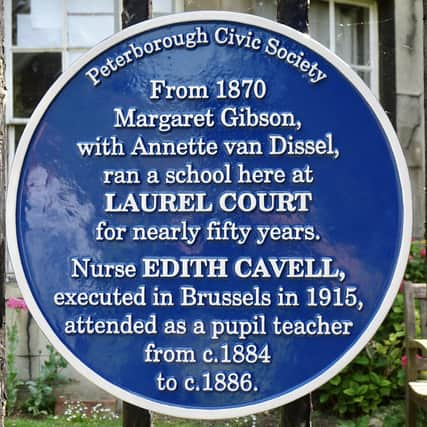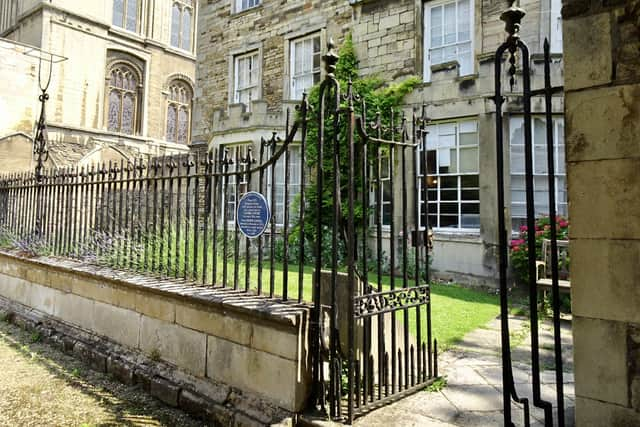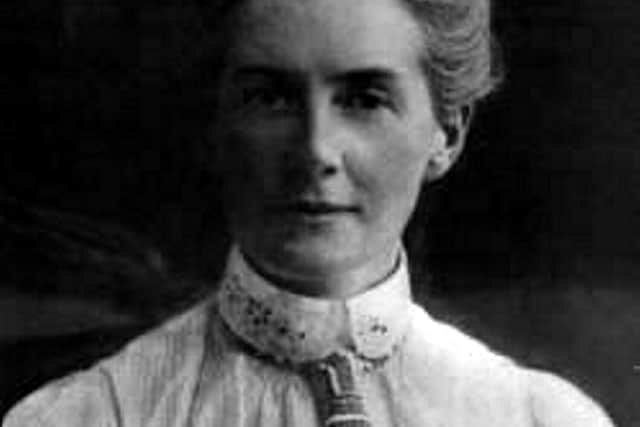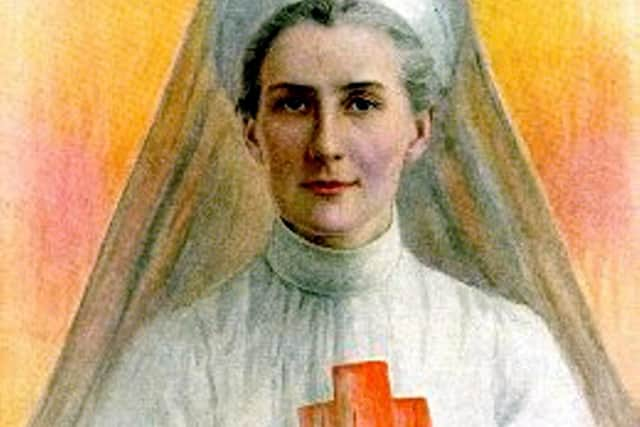The Peterborough nurse whose courage is admired worldwide


This plaque is located on railings at the front of Laurel Court in the Cathedral cloisters.
Laurel Court House, a probably mostly 18th-century ashlar-faced Grade 1 listed building, stands in proud isolation on the eastern side of the cathedral cloister.
Advertisement
Hide AdAdvertisement
Hide AdIt has served a number of functions: private house, school, clergy accommodation including, in the mid-20th century, Deanery and, until comparatively recently, song school. Currently it remains in residential occupancy.


In 1871 a school was established there by Margaret Gibson, a native of County Cork Ireland and her business partner Annette van Dissel. The school had transferredto the cathedral precincts after initially being set up in Fletton a year or two previously.
Their school functioned in the cloister for almost 50 years.
Between roughly 1884 and 1886 Edith Cavell received some of her education, both as a pupil and as a student/teacher, at Laurel Court.
Advertisement
Hide AdAdvertisement
Hide AdEdith Cavell was born at Swardeston near Norwich, where her father was a vicar for no less than 45 years.


Her time in Peterborough was followed by work as a governess in Brussels and nurse training at the London Hospital, before she was effectively ‘head-hunted’ for the post of matron for a newly-established nursing school in Brussels.
Within a year or so she would find herself responsible for nurse training at three hospitals plus numerous schools and kindergartens.
Her fame internationally and the reason for her continuing to be honoured in Peterborough resides of course in her treatment following the German occupation of Brussels in late 1914.
Advertisement
Hide AdAdvertisement
Hide AdHer courageous refusal to submit to German military law by persisting in sheltering wounded British and French soldiers as well as Belgian and French civilians of military age, then helping to organise their guided escape across the Dutch border, enraged the German authorities.


Having been betrayed by a collaborator she was arrested in August 1915, prosecuted and tried by court martial under the German Military Code.
Although the Geneva Convention usually guaranteed protection of medical personnel, under the version of the Convention there current such protection was forfeited if deployed as a cover for ‘belligerent action’.
The German authorities brushed aside all appeals for pardon made on the grounds that she had helped save so many lives, Germans as well as Allied. Edith Cavell was executed in October 1915.
Advertisement
Hide AdAdvertisement
Hide AdBuried initially by the Saint Gilles prison, Edith Cavell’s remains were brought back to Britain at the end of the war and, following a service in Westminster Abbey, transferred back home to Norwich for burial just outside the east end of that cathedral.
Many memorials in her memory were created around the world.
In St Martin’s Place London, beside the National Portrait Gallery, stands an enormous monument bearing the famous inscription: “Patriotism is not enough. I must have no hatred or bitterness towards anyone.”
The standing figure of Nurse Cavell is by the distinguished sculptor Sir George Frampton RA.
In Peterborough, friends and colleagues from Laurel Court School raised subscriptions to pay for the memorial, bearing Edith Cavell’s portrait in profile, located in the cathedral.
Advertisement
Hide AdAdvertisement
Hide AdAbove is hung the lamp used on Cavell’s night-time ward rounds and, as is sometimes claimed, also to guide escapees. Beneath Nurse Cavell’s memorial may also be found a plaque to Margaret Gibson, the first woman to be granted the freedom of this city.
This plaque is one of a series of 15 blue plaques recently installed in central Peterborough by Peterborough Civic Society.
The new series of plaques augments the 20 existing plaques in the city centre.
Further details about all the plaques will soon be found in the accompanying booklet which will be available at the Town Hall or via the Society’s own website once the Covid-19 lockdown restrictions are relaxed.
In the meantime, a download of the booklet is available on the Society’s website.
The plaques project has been supported by the National Lottery Heritage Fund and Peterborough City Council.
Comment Guidelines
National World encourages reader discussion on our stories. User feedback, insights and back-and-forth exchanges add a rich layer of context to reporting. Please review our Community Guidelines before commenting.